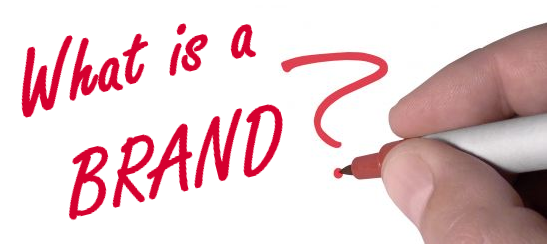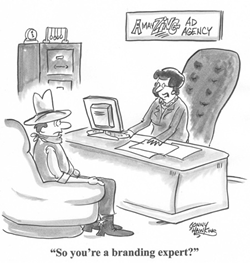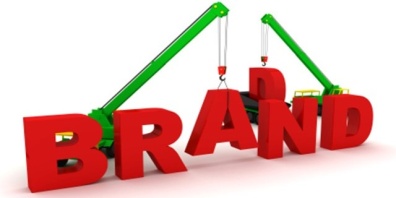Why Your Brand Is More Important than Ever

An earlier blog post of mine (Convenience over Quality? Why Your Brand Is the Answer.) focused on how “The Brand” is becoming more important than ever because of the steady and increasingly significant role technology is playing in your customers’ expectations and experiences. As more and more purchase decisions are conveniently being made or influenced online (think Amazon, restaurant delivery, websites, social media, third-party reviews … ), your brand and its reputation are the critical backdrops to the customer journey and the buying experience.
What Is the Brand About?
What “The Brand” means to you may differ depending on your role as a customer or business leader:
- For the financially focused, “The Brand” might be seen in the light of its financial resiliency. A restaurant chain with hundreds of locations and hundreds of millions in sales might be valued as a “strong brand”—even if its customers are not fully engaged and loyalty is declining. I have personally seen this perspective voiced during buyout and M and A discussions.
- To a restaurant operations leader, his or her “Brand” vision might be limited to how well his team delivers the product or service (or both).
- A manufacturer, on the other hand, might be caught up in the efficiency and
 quality of his plants or how well the product is delivering against customer performance expectations.
quality of his plants or how well the product is delivering against customer performance expectations. - And to others, “The Brand” might be represented by its name, logo, design, advertising, promotions, locations, trademarks, founder, social media usage, innovativeness, or …
“The Brand” can mean different things to different people, but every brand carries a legacy of values, perceptions, and customer expectations. While marketers—and customers―may differ on the details, most would agree that “The Brand” is made up of tangible attributes and intangible emotional connections. When used strategically, a combination of the tangible and intangible―the logical and emotional―can build lasting perceptions which build sales, revenues, and loyalty.
To me, the ideal “Brand” delivers a high level of customer engagement which brings customers coming back for more. For example, I remember very well watching customers do blind taste tests, and, more often than not, rationalizing and sticking with their brand preference. They stuck with the brand that connected or engaged them. Making that connection relies, of course, on having a product or service which also delivers the taste, style, and functionality which fulfills needs and expectations.
It is critical for your customers and employees—both external and internal publics―to see your brand in the most meaningful, engaging, and motivating light.
Helping Your Brand Connect
Your brand will connect best if it is both logically and emotionally relevant to your customers and their needs. It not only benefits your customers in a memorable way but also consistently delivers and communicates that perception over and over and over again―from every angle.
 To be memorable, a motivating brand needs to make an emotional connection with its customers. Emotional connectivity is at the core of our brain’s remembering. And, of course, it must meet our tangible expectations with the right set of performance attributes, which is also a part of the customer experience and should be key to your business strategy.
To be memorable, a motivating brand needs to make an emotional connection with its customers. Emotional connectivity is at the core of our brain’s remembering. And, of course, it must meet our tangible expectations with the right set of performance attributes, which is also a part of the customer experience and should be key to your business strategy.
With so many views of “The Brand” coming from different angles, the Brand’s makeup can be complex. This complexity underscores the importance of repeatedly delivering a consistently uniform view to frame “The Brand” meaning and value for the customer and employees.
Finding the Right Elements for Your Brand
Depending on their focus, most marketers will have their own sense of “The Brand’s” core elements.
I have consistently worked with five key elements, and they have been successfully  relevant to different business situations and various customers. I have seen how these elements, pulled together, can add value and customer focus from my early days in advertising to working with restaurant, retail, and B2B clients. In fact, I can point to a fast-casual restaurant turnaround that had not really started “turning around” until the management team had a full understanding of “The Brand.” And there was my casual dining client which needed a more in-depth understanding of their “Brand” to pull the management team together and strengthen their business development program.
relevant to different business situations and various customers. I have seen how these elements, pulled together, can add value and customer focus from my early days in advertising to working with restaurant, retail, and B2B clients. In fact, I can point to a fast-casual restaurant turnaround that had not really started “turning around” until the management team had a full understanding of “The Brand.” And there was my casual dining client which needed a more in-depth understanding of their “Brand” to pull the management team together and strengthen their business development program.
Most importantly, the right brand development process can give companies a foundational platform that resonates with their customers and provides employees something to stand for and care about—all in a memorable way.
My five suggested elements are Positioning, Promise, Values, Personality, and Tone. Throughout each element, brevity and memorable communications matter. “Relatable,” “relevant,” and “authentic” seem to be good words to keep in mind.
- Positioning: announces how your company’s brand is differentiated from the competition (having a competitive brand message means a lot!) and where it sits in the consumer’s decision-making world. It’s a broad stroke, but it needs to relate to what your brand does best, what its passions are, and what your customers care about.
- Promise: stakes out your company’s long-term commitments and benefits. It’s the one core thing your company will deliver to your customers over and over and over again, the thing you want to be known for with your customers and employees. The Promise can also provide quantitative evidence in support of the Positioning.
- Values: go a bit deeper and connect with the more fundamental aspects of why your brand exists. They must be fully accepted by the management team and employees and connect directly to the product and service because values are the key to your company’s culture. And it was Peter Drucker who said: culture eats strategy for breakfast.
- Personality: is exactly what you would expect it to be. If the company were a person, would it be serious, light-hearted, curious, receptive, helpful? There are lots of possible adjectives, but what fits your company’s heritage, positioning, and marketplace? Remember that people buy from people.
- Tone: relates to the personality. But how do you want to be talking to your customers and employees? Open? Respectful? Diligent? Committed? Serious? Again, this aspect must support and be consistent with your business strategy and positioning.
My next blog post will deal more directly with the how to define the company’s brand and how “The Brand” is connected to the Business Strategy and Customer Engagement.
But the most important branding element is this: create something that is fundamental and long-term. Your “Brand” should not be changed like an advertising slogan but needs to go as deeply into the company culture as possible.
Suggested Related Articles
- “One Branding: Uniting the Employer, Corporate, and Product Experience”
- “Brands, Branding, and Celebrities”
- “How Failure to Change Can Put Brand Power in Reverse”
- “Brands that Have Mastered the Mobile Experience“
- “Learn Why Branding Is Important in Marketing”